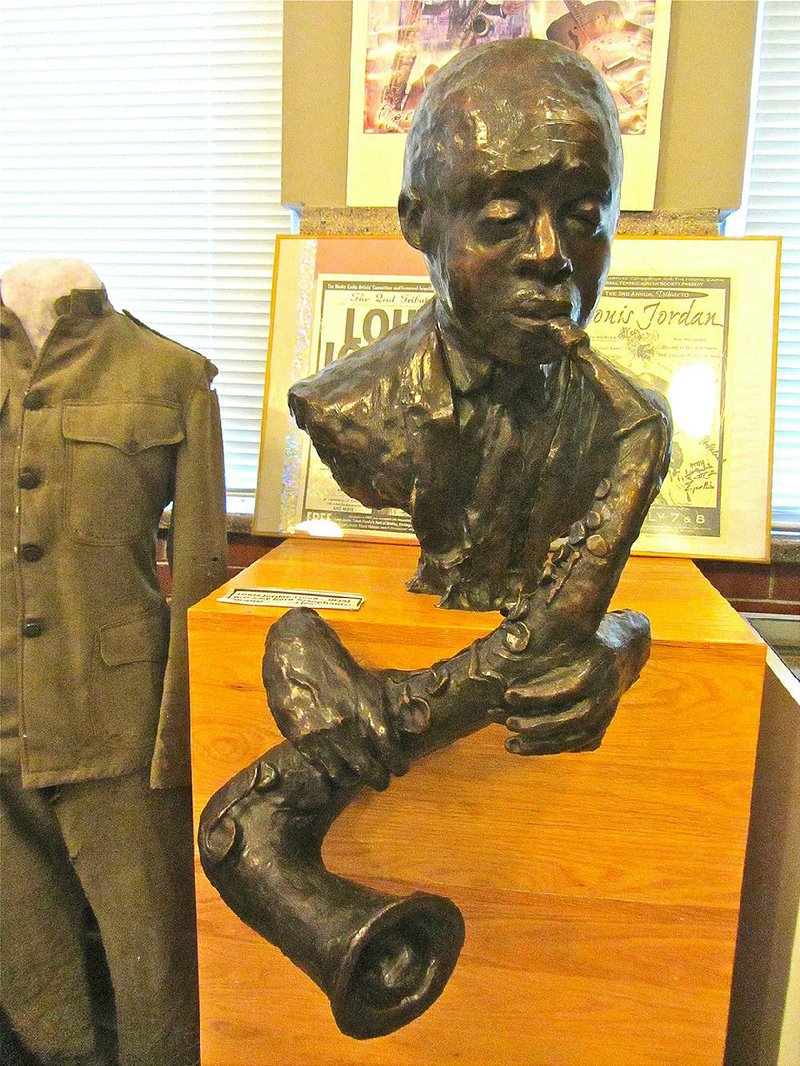BRINKLEY -- A decade ago, Brinkley had high hopes that an ivory-billed woodpecker really was lurking somewhere in the nearby Cache River National Wildlife Refuge.
If the presence of this spectacular and mysterious species could be verified, proving it was not extinct, flocking birders would base themselves in Monroe County's largest town (population 3,100). They'd spend their dollars locally.
Alas, the search for the Lord God Bird fizzled. So Brinkley has to settle for being the home of famed musician Louis Jordan, born here in 1903. It can also revel in its ties to the golden era of railroads.
Those connections, along with a potpourri of other area lore, are celebrated at the Central Delta Depot Museum. Operated by the Central Delta Historical Society, it fills the city's former train depot.
Opened during railroading's heyday in 1912, the station was said to be the most impressive Rock Island Line depot between Memphis and Little Rock. That was thanks to its spacious wing design, with freight rooms at each end.
Lagniappe for visitors is the chance to meet Bill Sayger, museum director since its 2003 opening. His knowledge and enthusiasm enrich tours of the wide-ranging collection.
The most prominent Jordan object is a bust of the pioneering saxophonist and singer, sculpted by Arkansas Democrat-Gazette editorial cartoonist John Deering.
Starting as a boy musician in Brinkley, Jordan has been called "the Father of Rhythm and Blues" and "King of the Juke Boxes." As he once put it, "I made the blues jump." Sayger sometimes lets visitors listen to early Jordan 78 rpm recordings on the museum's antique phonographs.
Perhaps the most precious artifact here is a Bible published between 1867 and 1871 for the blind. It's not printed in Braille, which became the standard form of reading by those with impaired sight by the start of the 20th century.
The sacred text on display, part of an eight-volume Bible, contains the Gospels of Matthew, Mark, Luke and John. It's a raised-letter edition, devised by Samuel Gridley Howe using an embossed Roman alphabet he called Boston line type. For a while, it was the primary U.S. reading code for the blind, who could feel the shape of the raised consonants and vowels.
Displayed on the museum grounds is a century-old frame depot that once served the town of Monroe on a Missouri Pacific rail line connecting Brinkley to Helena. There's also a Southern Pacific caboose, one of the last 75 built for that line in the 1980s.
When the Central Delta Depot opened 103 years ago, Brinkley's population was 1,740, a little more than half of today's count. So it's amazing that 16 passenger trains a day pulled into the station in 1912. Passenger service here ended in 1967.
Around the corner from the museum in a former hotel is Low's Bridal & Formal Shop, something like a museum for the betrothed. There are no tours, but visitors can admire wedding gowns from more than 60 of the world's noted designers.
Billed as the South's largest bridal emporium, Low's draws customers from far and wide. Worth at least a peek, even for folks without marriage on the horizon, it's another local claim to fame.
Central Delta Depot Museum, 100 W. Cypress St., Brinkley, is usually open 10 a.m.-2 p.m. Monday-Saturday. Admission is $2 ($1 for children). It's wise to call ahead and confirm opening: (870) 998-2291 or (870) 589-2124.
Weekend on 05/21/2015

